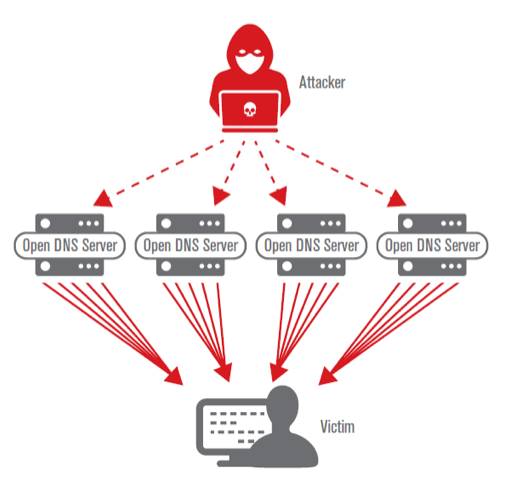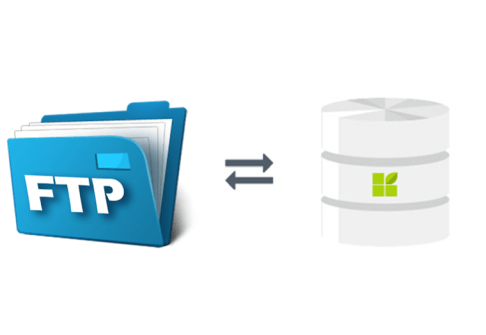
TFTP is a simplified version of the File Transfer Protocol. It uses UDP in place of TCP, and does not require authentication. This makes TFTP faster than FTP. However, there are differences between FTP (and TFTP). This article will talk about TFTP, and some of its limitations. TFTP doesn't have authentication, and it is also slow. If you need to share files between two systems, then TFTP may be better.
File Transfer Protocol is simplified with TFTP
TFTP can be described as a simplified version (or re-write) of File Transfer Protocol (FTP). Unlike FTP, it does not use a logon mechanism or authentication. Instead, it transmits data in plaintext over a network. It is easy to intercept and read by malicious hackers. TFTP is not a good alternative for sensitive data transfer. However, TFTP is still useful for bootstrapping purposes.
TFTP is based on a client request to upload a file to a server. A connection request is also known. The server must agree to the connection request. The client then sends the file after the server has granted the request. The file is sent in blocks. This block size was set at 512 bytes in the original TFTP protocol. However, later versions of the protocol allow clients and servers to negotiate the size of each block. If the server rejects the client's request, the transfer is considered unsuccessful.
It lacks authentication
TFTP can be used to transfer files. It is compatible with UDP port 69, and clients are not required to authenticate. Using RFC 1350 datagram format, TFTP allows clients to read files from and write to servers. TFTP, despite its popularity, is seldom used on public Internet. TFTP is used mostly to send configuration files to VoIP handsets and ROM pictures.

TFTP, which was originally published in 1980, was designed to allow file transfers of the most basic nature. It lacks authentication and is frequently found on a local network. This means that an unauthorized user could gain access to files that are being uploaded from a remote server.
It uses UDP
To verify that TFTP uses UDP, you can use tcpdump. It will examine a TFTP packet to determine if it does. Basically, tcpdump will interpret a UDP packet and print the RRQ, the name of the file, and the length of the data in bytes. The opcode is the first two bytes. Next, eight bytes of netascii are followed by another byte.
TFTP uses UDP port 69 for file transfers to and from remote servers. TFTP doesn't provide authentication or encryption for clients. This means that files can be read and modified by anyone. This protocol doesn't list directory contents.
It's faster than FTP
TFTP works as a layer protocol between the client and the server. Although it is not as safe as FTP TFTP can be used for file transfer. This is an excellent option in situations where directory visibility may not be necessary. For example, backing up files or updating files on an IOS device. It differs from FTP in the way it requests files. This makes it less useful for large file transfers.
TFTP is a client/server protocol that uses UDP to send files between servers. It transmits files using UDP port 69. The protocol is not secure, and it does not support user authentication. Instead, the client sends an acknowledgement for each data unit that is sent to it and the server then sends the next one. TFTP is simpler than FTP, and its simplicity makes it easier to implement.

It doesn't have error checking
Trivial File Transfer Protocol or TFTP is a file-transfer protocol. This protocol uses a network connection to transmit files from a client to a server. This protocol is meant to be lightweight and easy-to-implement. It lacks the features of regular FTP such as error checking, user authentication and directory support. TFTP's problems are usually limited to file name issues or incorrect credentials.
TFTP uses simple checkssum techniques to reject corrupted files. TFTP cannot be secured against man-inthe-middle attack, so encryption is necessary. TFTP's file transmission protocol has a limit 32 MB and 6-five hundred fifty thousand bytes each block.
FAQ
Which platform is best to create a website?
The best platform for designing a website is WordPress. It has all the features required to create a professional-looking website.
Themes are easy to install and customize. You have thousands of options for free themes.
Plugins allow you to add functionality, such as adding social media buttons or creating contact pages.
WordPress is very easy to use. You don’t need to know HTML code to edit your theme files. Simply click on an icon, and then select what you want.
Although there are many platforms out there, I prefer WordPress. It's been around since the beginning and is still being used by millions of people worldwide.
What is a responsive design web design?
Responsive Web Design is a method of designing responsive websites. It allows content to display on all devices (desktop computers, tablets and smartphones), so that it can be viewed easily on any device. This allows users the ability to view a website simultaneously on different devices and still have access to other features like navigation menus, buttons, and so forth. RWD is intended to ensure that any user viewing a site views the exact version on their screen.
A website that sells primarily through eCommerce would be an example of this. You want your customers to be able to purchase products from your store, even if they are viewing it on a phone.
A responsive website will adjust its layout automatically based on what device is used to view it. So, viewing the site on your laptop will look like a standard desktop website. It will be different if the page is viewed from your phone.
This allows you create a website that looks great on any device.
What Is Website Design Software?
The website design software can be used by graphic artists and photographers, illustrators, writers and others who are involved in visual media.
There are two types main website design software options: desktop apps and cloud-based. Desktop apps can be installed on your local computer. They also require that you install additional software. Cloud-based software is hosted remotely over the internet. It does not require you to install additional software, which makes them great for mobile users.
Desktop Applications
While desktop applications have more features than cloud-based options, they're not always needed. Some people prefer working exclusively on a desktop app, as they find it easier. Some people like the same tool no matter whether they're working on a computer or a smartphone.
Cloud-Based Solutions
Web designers who wish to save time or money should consider a cloud-based option. These services make it possible to edit any type document from anywhere with an Internet connection. This allows you to use your tablet while waiting for your coffee maker to brew.
If you decide on a cloud-based solution, you will need to purchase a license. You won't need to purchase additional licenses if you upgrade to a later version.
If you have Photoshop, InDesign and Illustrator, these programs can be used for creating web pages.
How much do web developers make?
Working on a website yourself will likely earn you between $60 and $80 an hour. You can charge more if you're an independent contractor. A typical hourly rate for a freelancer could be between $150 and $200.
How to design a site?
Your customers will first need to understand the purpose of your website. What do they look for on your site?
What other problems could they face if they can't find the information they need on your website?
This knowledge will help you to identify the problems and then solve them. Your site must look professional. It should be easy for users to navigate.
It is important to have a professional-looking website. It should not take too much time to load. If it takes too many seconds, people won’t be able stay as long. They will go elsewhere.
If you want to create an eCommerce site, think about where all of your products are located. Are they all in the same place? Or are they scattered around your site?
You need to decide whether you want to sell one product at once or many different types of products. Do you want to sell just one type of product or multiple kinds?
When you answer these questions, your site can be built.
Now, it's time to take care of the technical aspects. How will your website work? Is your site fast enough to be useful? Can it be done quickly by people using their computers?
Will it be possible to buy something online without paying any extra? Are they required to register before they can buy anything?
These are the essential questions you should ask yourself. You'll be able to move forward once you have the answers to these important questions.
What is a website static?
A static site is one that stores all content on a server. Visitors can access the website via web browsers.
The term "static", refers to the absence or modification of images, video, animations, and so forth.
This site was originally designed for intranets. However, it has been adopted by small businesses and individuals who need simple websites with no custom programming.
Because static websites require less maintenance, they have grown in popularity. They're easier to update and maintain when compared to a fully-featured website with many different components (such as blogs).
They also tend to load faster than their dynamic counterparts. This makes them great for those who have slow Internet connections or users with mobile devices.
In addition, static sites are more secure than their dynamic equivalents. There's nothing to hack into a static website. Hackers have only access to data stored in a database.
There are two main ways you can create a static web site.
-
Using a Content Management System (CMS)
-
Create a static HTML web site
It all depends on what you need. If you're new to creating websites, I recommend using a CMS.
Why? Because it gives you complete control of your website. A CMS eliminates the need for a professional to set up your site. Upload files to the website server.
You can still learn how to code and create a static website. It will take some time to learn to program.
Statistics
- Is your web design optimized for mobile? Over 50% of internet users browse websites using a mobile device. (wix.com)
- In fact, according to Color Matters, a signature color can boost brand recognition by 80%. There's a lot of psychology behind people's perception of color, so it's important to understand how it's used with your industry. (websitebuilderexpert.com)
- It enables you to sell your music directly on your website and keep 100% of the profits. (wix.com)
- The average website user will read about 20% of the text on any given page, so it's crucial to entice them with an appropriate vibe. (websitebuilderexpert.com)
- When choosing your website color scheme, a general rule is to limit yourself to three shades: one primary color (60% of the mix), one secondary color (30%), and one accent color (10%). (wix.com)
External Links
How To
How to use WordPress in Web Design
WordPress is a software application that you can use to build websites or blogs. The main features include easy installation, powerful theme options, plug-ins, and many others. You can personalize your website with this website builder. It includes hundreds of themes, plugins, and other tools that can be used to create any type of website. If you would like, you can even add your own domain name. You can manage your site's appearance, functionality, and design with these tools.
WordPress can help you create stunning sites even without knowing how to code HTML. It doesn't matter if you don’t know much about coding. You can create a beautiful website in no time. We'll walk you through how to install WordPress on your PC and show you the basics of getting your blog online. We will walk you through everything so you can do it at home.
WordPress.com is the most widely used Content Management System (CMS) and currently has 25 million users around the world. Two versions of WordPress are available. You can either get a license from them at $29/month or you can download the source code for free.
WordPress is an excellent blogging platform for many reasons. One reason is that WordPress is extremely easy to use. Anyone with a basic knowledge of HTML can create a stunning site. Its flexibility is another benefit. WordPress.org offers many themes for free. This means that you can completely customize the look and feel without spending a dime. It is also highly customizable. Many developers offer premium addons to allow you update posts automatically after someone comments. You can also integrate social media sharing in your site.